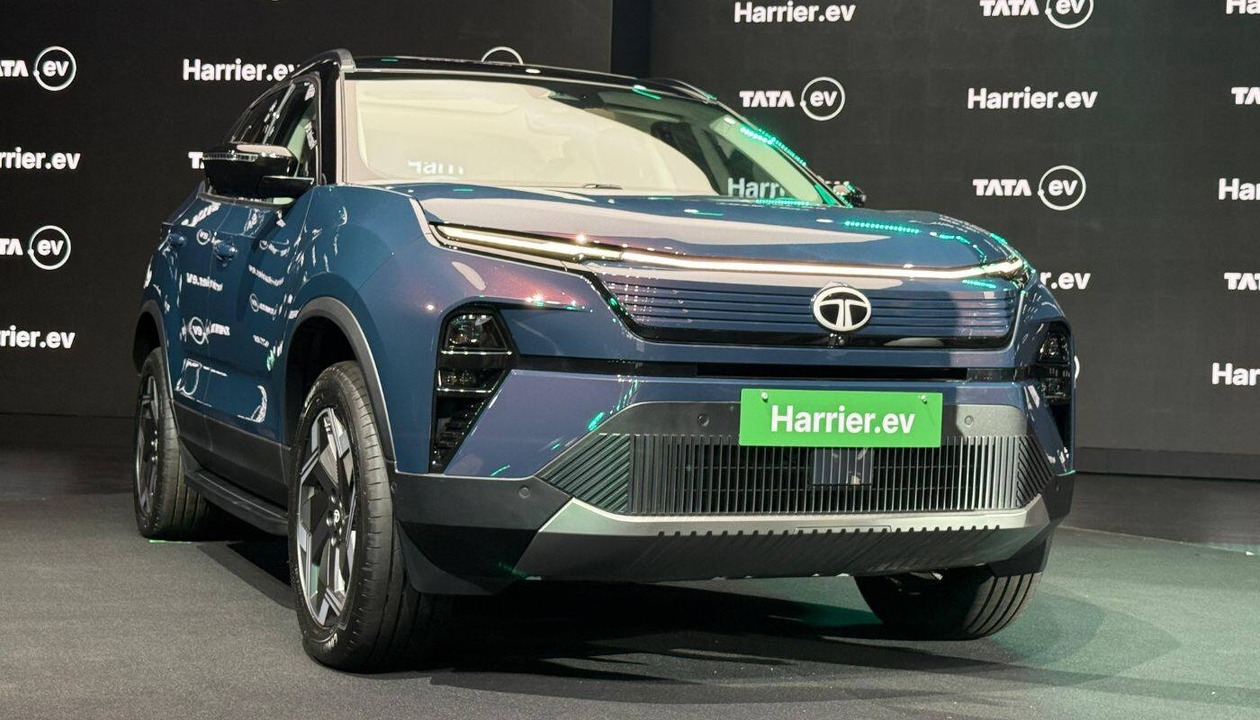The electric vehicle (EV) phenomenon in India just got a big boost! Tata Motors, a top player in the Indian automotive industry, has officially launched the Tata Harrier EV—an electric version of the popular Harrier SUV – and with rugged exterior styling, new technology, and clean zero-emission operation, the Harrier EV is set to disrupt the premium electric SUV segment in India.
Tata Harrier EV: What’s New?
The Tata Harrier EV retains its ICE (internal combustion engine) sibling’s aggressive stance while adding unique EV features. It boasts a closed-off grille, fresh aerodynamic alloy wheels, and blue EV accents to identify it as an electric vehicle.
Key Highlights:
EV Architecture: Based on Tata’s new Gen 2 EV architecture, which is optimized for efficiency and performance.
Dual Motor Setup: Anticipated to come with all-wheel drive (AWD) with dual motors for increased traction and off-road performance.
Battery & Range: Fitted with a large-capacity lithium-ion battery pack, with an estimated range of 400–500 km on a full charge.
Fast Charging: With DC fast charging, it can charge from 10% to 80% in less than an hour.
Design & Technology Upgrades
The Harrier EV not only replaces fuel with electricity—but also introduces significant advancements in design and features:
LED headlamps and networked tail lamps
Panoramic sunroof
12.3-inch touchscreen infotainment system
All-digital instrument cluster
Advanced Driver Assistance Systems (ADAS)
Over-the-air (OTA) updates for ongoing software upgrades
Sustainability with Power
The Tata Harrier EV is a testament to the brand’s shift towards sustainability without compromising on power or performance. Designed for both urban commuting and long-distance travel, it caters to families and tech-savvy professionals alike.
Expected Launch & Price
Although Tata has taken the Harrier EV to the country’s biggest auto shows, the launch is anticipated to happen by late 2025. The estimate for a price range of ₹28 lakh to ₹32 lakh (ex-showroom) has been anticipated by industry experts, based on which it will be in direct competition with electric SUVs of Mahindra, MG, and Hyundai.
Tata’s EV Vision
The Harrier EV forms a part of Tata’s aggressive EV strategy, which encompasses electric variants of its top models such as the Nexon, Punch, and Curvv. With the Harrier EV, Tata intends to provide premium electric mobility to mass customers, solidifying its position in India’s EV landscape.
Final Thoughts
The Tata Harrier EV is not simply an electrified variant of a well-liked SUV — it’s a statement of intent. With its striking looks, long range, cutting-edge features, and environmentally friendly edge, it’s a new benchmark for domestic electric vehicles in India.
Also Read:The New Mahindra XUV 900 Has Arrived with Bold Design, Premium Interiors & High-End Tech
Tata Harrier EV – Frequently Asked Questions (FAQ)
1. What is the Tata Harrier EV?
The Tata Harrier EV is the electric counterpart of Tata’s highly sought-after mid-size SUV, the Harrier. It comes with a completely electric powertrain and is equipped with contemporary style, intelligent technology, and environmentally friendly performance.
2. When will the Tata Harrier EV launch in India?
The Tata Harrier EV is anticipated to hit the market in late 2025. The company has revealed the car at several auto expositions, creating high expectation for its official launch.
3. What is the anticipated driving range of the Harrier EV?
The Harrier EV is anticipated to provide a range of 400 to 500 kilometers on full charge, depending on the configuration of the batteries and the conditions of the drive.
4. What are the charging options available?
The Tata Harrier EV will be compatible with:
DC fast charging (10 to 80% in less than 60 minutes)
AC home charging (slow, perfect for overnight charging)
5. Will the Harrier EV be all-wheel drive (AWD)?
Yes, Tata has made it official that the Harrier EV will have a dual-motor configuration with all-wheel drive, giving it a boost of off-road and all-weather capability.
